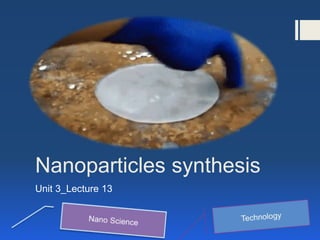NST 13th Lecture (Unit 3).pptx
ndian Oil Corporation Limited is an Indian central public sector undertaking under the ownership of the Ministry of Petroleum and Natural Gas, Government of India. It is headquartered in New Delhi. It is a public sector undertaking whose operations are overseen by the Ministry of Petroleum and Natural Gas. Wikipedia Stock price: IOC (NSE) ₹78.65 +0.95 (+1.22%) 15 Mar, 12:09 pm IST - Disclaimer Customer service: 1800 233 3555 Chairperson: Shrikant Madhav Vaidya Subsidiaries: Chennai Petroleum Corporation Limited, Lanka IOC, MORE Headquarters: New Delhi Founded: 30 June 1959 Total assets: 4.11 lakh crores INR (US$51 billion, 2022) Net income: 24,491 crores INR (US$3.2 billion, 2022)ndian Oil Corporation Limited is an Indian central public sector undertaking under the ownership of the Ministry of Petroleum and Natural Gas, Government of India. It is headquartered in New Delhi. It is a public sector undertaking whose operations are overseen by the Ministry of Petroleum and Natural Gas. Wikipedia Stock price: IOC (NSE) ₹78.65 +0.95 (+1.22%) 15 Mar, 12:09 pm IST - Disclaimer Customer service: 1800 233 3555 Chairperson: Shrikant Madhav Vaidya Subsidiaries: Chennai Petroleum Corporation Limited, Lanka IOC, MORE Headquarters: New Delhi Founded: 30 June 1959 Total assets: 4.11 lakh crores INR (US$51 billion, 2022) Net income: 24,491 crores INR (US$3.2 billion, 2022)ndian Oil Corporation Limited is an Indian central public sector undertaking under the ownership of the Ministry of Petroleum and Natural Gas, Government of India. It is headquartered in New Delhi. It is a public sector undertaking whose operations are overseen by the Ministry of Petroleum and Natural Gas. Wikipedia Stock price: IOC (NSE) ₹78.65 +0.95 (+1.22%) 15 Mar, 12:09 pm IST - Disclaimer Customer service: 1800 233 3555 Chairperson: Shrikant Madhav Vaidya Subsidiaries: Chennai Petroleum Corporation Limited, Lanka IOC, MORE Headquarters: New Delhi Founded: 30 June 1959 Total assets: 4.11 lakh crores INR (US$51 billion, 2022) Net income: 24,491 crores INR (US$3.2 billion, 2022)ndian Oil Corporation Limited is an Indian central public sector undertaking under the ownership of the Ministry of Petroleum and Natural Gas, Government of India. It is headquartered in New Delhi. It is a public sector undertaking whose operations are overseen by the Ministry of Petroleum and Natural Gas. Wikipedia Stock price: IOC (NSE) ₹78.65 +0.95 (+1.22%) 15 Mar, 12:09 pm IST - Disclaimer Customer service: 1800 233 3555 Chairperson: Shrikant Madhav Vaidya Subsidiaries: Chennai Petroleum Corporation Limited, Lanka IOC, MORE Headquarters: New Delhi Founded: 30 June 1959 Total assets: 4.11 lakh crores INR (US$51 billion, 2022) Net income: 24,491 crores INR (US$3.2 billion, 2022)ndian Oil Corporation Limited is an Indian central public sector undertaking under the ownership of the Ministry of Petroleum and Natural Gas, Government of India. It is headquartered in New Delhi. It is a public sector undertaking whose oprati

Recommended
More Related Content
Similar to NST 13th Lecture (Unit 3).pptx
Similar to NST 13th Lecture (Unit 3).pptx (20)
Recently uploaded
Recently uploaded (20)
NST 13th Lecture (Unit 3).pptx
- 2. Contents Top down and bottom-up approach Colloids Emulsions Micelles Polymers Mechanical attrition High energy ball milling
- 3. Low Temperature Methods are basically Bottom Up Approaches Low Temperature Routes also known as “Chimie Douce” Its meaning in French is Soft Chemistry
- 4. Low Temperature Routes Sol-Gel (Citrate-Gel) methods (Depending on Citric Acid) Polyhydroxy acids for the formation of the Sol Micro emulsion method
- 5. Sol-Gel It is a general term for many of the processes
- 6. What is Sol-Gel? Solid particles dispersed in the liquid (a sol) Agglomerate together to form a continuous 3 dimensional network extending throughout a liquid (a gel) It involves hydrolysis and poly-condensation
- 8. Sol- Gel Powders: Nanocrystalline, microcrystalline, amorphous Monoliths, Coatings, Films, Fibers Glasses, Ceramics, Hybrid materials Aerogels
- 9. Why Sol-Gel?
- 11. One is a top-down strategy of miniaturizing current technologies, while the other is a bottom-up strategy of building ever-more-complex molecular devices atom by atom. Top-down approaches are good for producing structures with long-range order and for making macroscopic connections, while bottom-up approaches are best suited for assembly and establishing short-range order at nanoscale dimensions. The iintegration of top-down and bottom-up techniques is expected to eventually provide the best combination of tools for nanofabrication. Nanotechnology requires new tools for fabrication and measurement.
- 13. Top-down approach The most common top-down approach to fabrication involves lithographic patterning techniques using short-wavelength optical sources. A key advantage of the top-down approach—as developed in the fabrication of integrated circuits is that the parts are both patterned and built in place, so that no assembly step is needed. Optical lithography is a relatively mature field because of the high degree of refinement in microelectronic chip manufacturing , with current short- wavelength optical lithography techniques reaching dimensions just below 100 nanometres (the traditional threshold definition of the nanoscale). Shorter-wavelength sources, such as extreme ultraviolet and X-ray, are being developed to allow lithographic printing techniques to reach dimensions from 10 to 100 nanometres. Scanning beam techniques such as electron-beam lithography provide patterns down to about 20 nanometres. Here the pattern is written by sweeping a finely focused electron beam across the surface. Focused ion beams are also used for direct processing and patterning of wafers, although with somewhat less resolution than in electron-beam lithography. Still-smaller features are obtained by using scanning probes to deposit or remove thin layers.
- 14. Bottom-up approach Bottom-up, or self-assembly, approaches to nanofabrication use chemical or physical forces operating at the nanoscale to assemble basic units into larger structures. As component size decreases in nanofabrication, bottom-up approaches provide an increasingly important complement to top-down techniques. Inspiration for bottom-up approaches comes from biological systems, where nature has harnessed chemical forces to create essentially all the structures needed by life Researchers hope to replicate nature’s ability to produce small clusters of specific atoms, which can then self-assemble into more-elaborate structures.